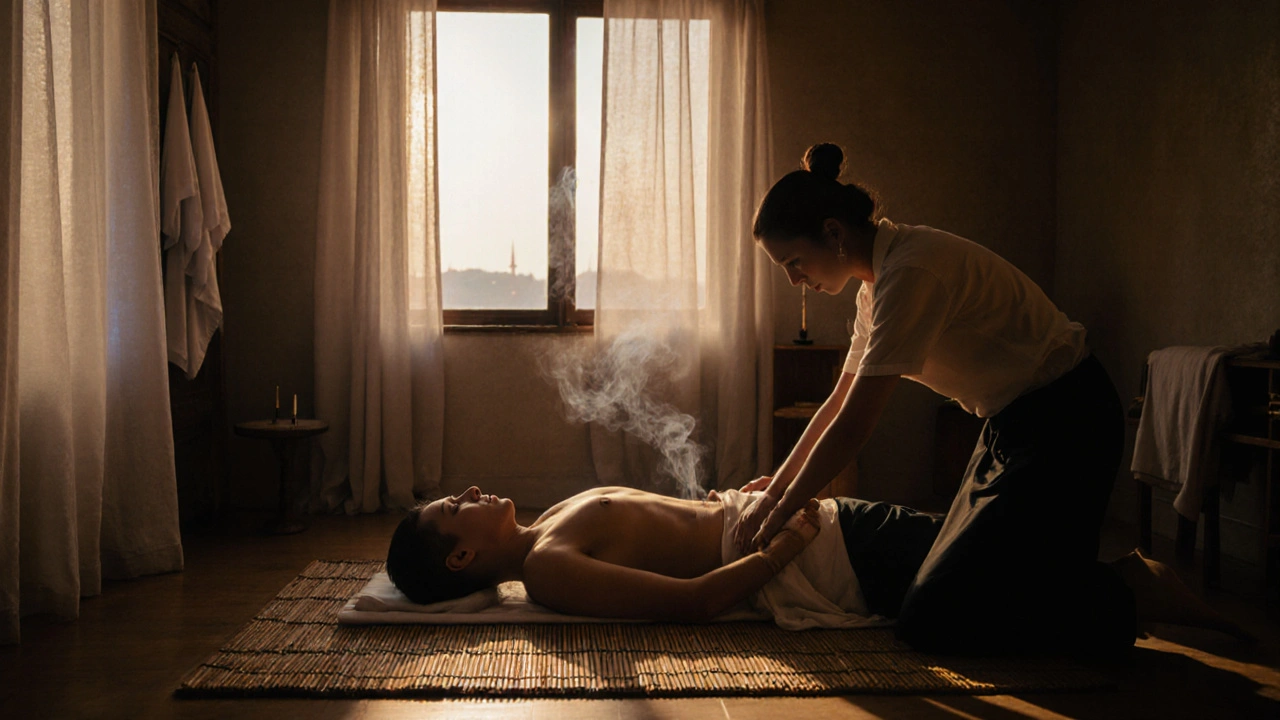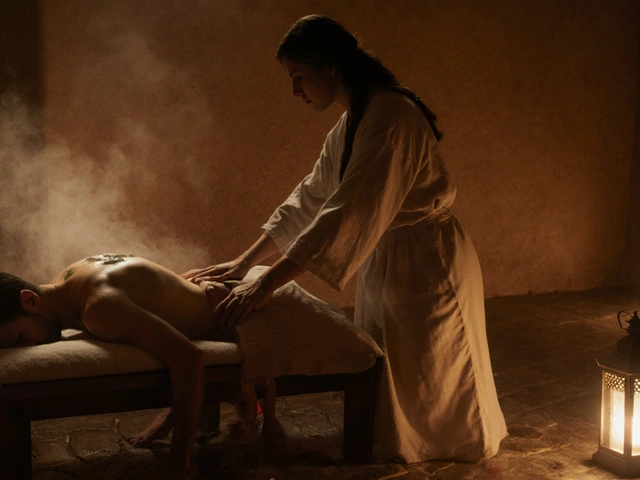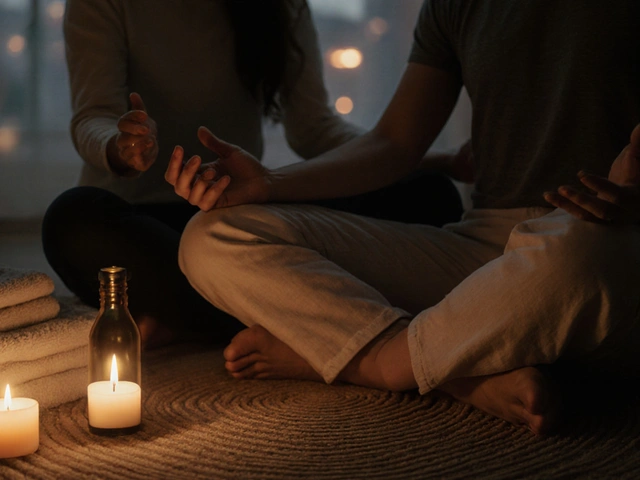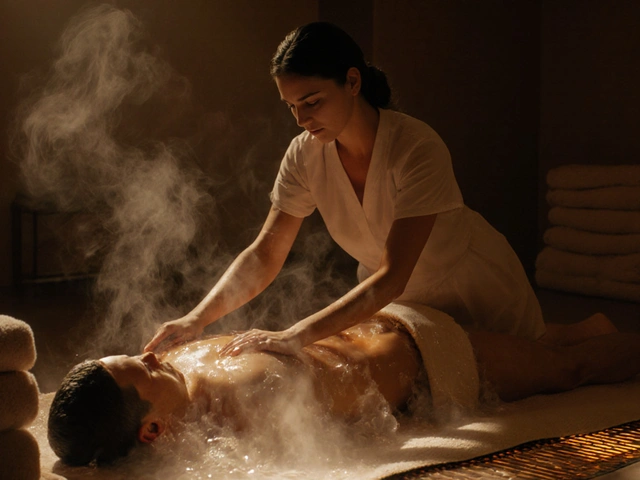Discover Serenity: The Ultimate Guide to Thai Massage in Istanbul
You’ve had a long day. Your shoulders are tight, your mind is buzzing, and you just need to reset. But instead of another generic spa treatment, you’re drawn to something deeper-something rooted in centuries of tradition. That’s where Thai massage in Istanbul comes in. It’s not just a massage. It’s a full-body reset that leaves you feeling lighter, looser, and strangely calm-even if you walked in stressed out of your mind.
And yes, Istanbul is one of the best places in Europe to find real, authentic Thai massage. Not the watered-down version you get in hotel spas. We’re talking about practitioners who trained in Chiang Mai or Bangkok, using the same techniques passed down for generations. You don’t need to fly to Thailand to experience it. It’s right here, tucked into quiet streets in Beyoğlu, Kadıköy, and even near the Bosphorus.
What Exactly Is Thai Massage?
Thai massage is not your typical rub-down. You stay fully clothed-usually in loose cotton pants and a T-shirt. The therapist doesn’t use oils. Instead, they use their hands, thumbs, elbows, knees, and even feet to apply pressure along energy lines called sen lines. Think of it like yoga you don’t have to do yourself. The therapist gently stretches you, twists your limbs, and presses into knots you didn’t even know you had.
It’s often called "lazy man’s yoga" because you lie there while someone else moves your body into deep, restorative positions. You’ll feel a mix of intense pressure and soothing release. Some people compare it to being pulled apart and gently put back together. Afterward, you don’t just feel relaxed-you feel restructured.
Unlike Swedish massage, which focuses on muscle relaxation, Thai massage works on your entire energetic system. It’s designed to unblock stagnation, improve circulation, and restore balance. That’s why people come back week after week-not just for the relief, but because they notice their posture improves, their sleep deepens, and their headaches fade.
Why Thai Massage in Istanbul Works So Well
Istanbul is a city of contrasts. Ancient mosques stand beside modern cafes. The Bosphorus connects Europe and Asia. And in this mix, Thai massage found a perfect home. The city has a long history of embracing wellness traditions from across the world-from Ottoman hammams to Russian rubdowns. Thai massage fits right in.
But here’s the real reason it thrives here: the people. Many Thai therapists in Istanbul trained at top schools in Bangkok before moving here. They didn’t come for the tourist dollars. They came because Istanbul’s pace-fast, loud, overwhelming-makes people desperate for deep, grounding relief. And these therapists? They know exactly how to give it.
Plus, Istanbul’s vibe is surprisingly calm in the right corners. Walk into a quiet studio in Nişantaşı after a busy day of shopping, and you’ll feel the noise drop away. The scent of lemongrass, the sound of soft chimes, the warmth of the room-it all works together to pull you out of your head and into your body.
Benefits You’ll Actually Feel
Let’s cut through the fluff. What does Thai massage actually do for you?
- Relieves chronic back and neck pain-especially if you sit at a desk all day. One client, a software developer from Üsküdar, said his headaches vanished after three sessions.
- Improves flexibility-even if you’re stiff as a board. After a few sessions, you’ll notice you can touch your toes without wincing.
- Reduces stress and anxiety-not just temporarily. Regular clients report better sleep and less mental chatter.
- Boosts circulation-your hands and feet won’t feel cold as often.
- Helps with digestion-yes, really. The abdominal work in Thai massage stimulates your internal organs.
One woman I know, a teacher from Kadıköy, started going after her divorce. She said, "I didn’t realize how much tension I was holding until someone else moved my body for me. It was like my soul finally got to breathe."
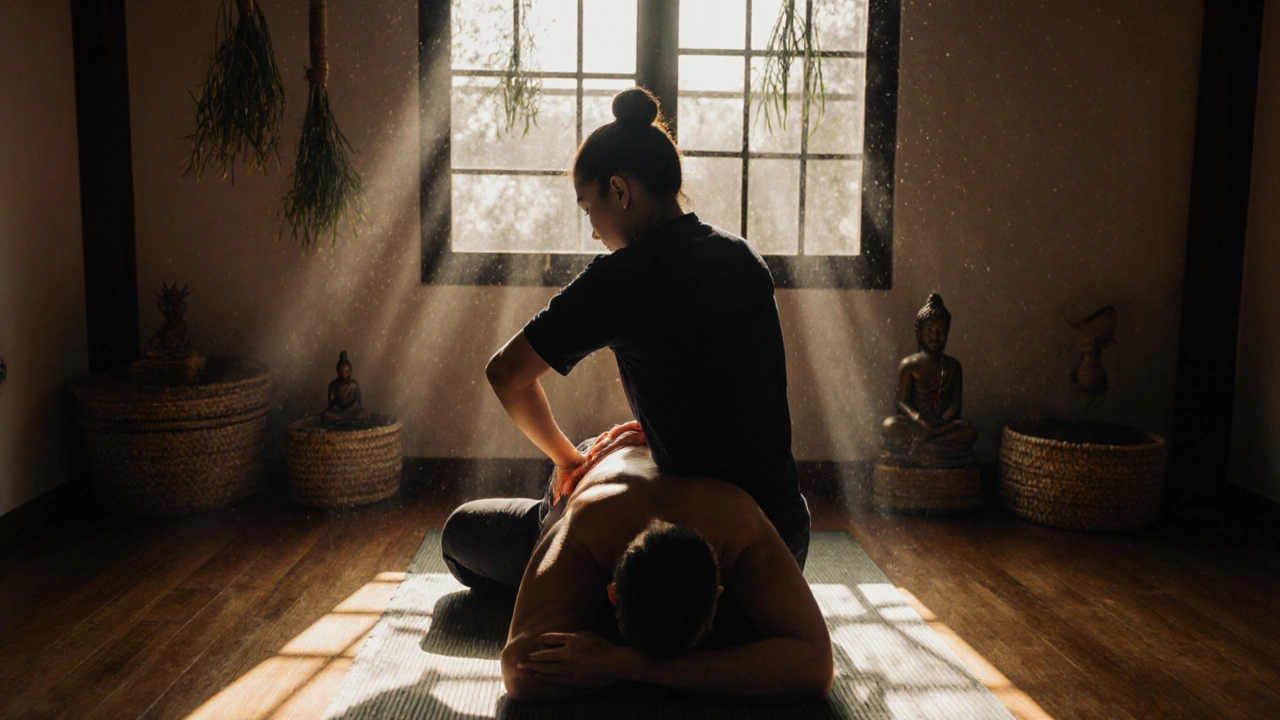
Types of Thai Massage Available in Istanbul
Not all Thai massages are the same. Here’s what you’ll find in Istanbul:
- Traditional Thai Massage-the full experience. 60 to 90 minutes. Includes stretching, pressure points, and deep compression. Best for first-timers looking for the real deal.
- Thai Oil Massage-a hybrid. Uses light oils for smoother movement. Less intense, more relaxing. Good if you’re sensitive to pressure.
- Thai Foot Reflexology-focused on the feet, which connect to every organ in your body. Great if you’re on your feet all day or just want a quick 30-minute reset.
- Couples Thai Massage-two tables side by side. Perfect for partners who want to unwind together. The vibe is calm, not romantic. Just quiet, shared relaxation.
- Thai Yoga Massage-a step deeper. Involves assisted yoga poses. You’ll be stretched further than you thought possible. Only for those open to intense movement.
Most places in Istanbul offer the traditional version as their main service. That’s the one you want unless you’re specifically looking for something gentler.
How to Find the Best Thai Massage in Istanbul
There are dozens of places offering "Thai massage" in Istanbul. But not all are real. Here’s how to spot the genuine ones:
- Look for Thai names-the therapist’s name should sound Thai, not Turkish with a "Thai" label slapped on. Check their Instagram or website bio. Real therapists often mention their training in Thailand.
- Check the space-authentic places use bamboo mats, not plush beds. The room should feel simple, clean, and quiet. No loud music. No flashing lights.
- Ask about the lineage-a good therapist will tell you where they trained. "Chiang Mai," "Bangkok," or "Wat Pho" are good signs.
- Read reviews carefully-avoid places with only 5-star reviews. Real ones have 4.5s with comments like, "It hurt but I loved it," or "I cried from the relief."
Top neighborhoods to search: Beyoğlu (especially around İstiklal), Kadıköy (Moda area), Nişantaşı, and Beşiktaş. These areas have the highest concentration of serious practitioners.
What to Expect During Your First Session
You walk in. You’re nervous. That’s normal.
You’ll be asked to change into the provided cotton clothes. No underwear? No problem-it’s standard. The therapist will explain the flow: you’ll lie on your back, then your stomach, then side. They won’t touch your private areas. Ever. This is not a sensual massage. It’s therapeutic.
The session starts slow. Gentle pressure on your feet, then your legs. Then comes the stretching. You’ll feel your hip rotate, your spine twist, your shoulder release. Some moves might make you grunt. Others might make you laugh. One woman I know laughed so hard she cried because the therapist pulled her leg behind her head like a pretzel.
Midway through, you might feel a deep ache. That’s the energy block breaking. Don’t panic. Breathe. The therapist will pause and ask, "Too much?" They’ll adjust. No one forces you into anything.
At the end, you’ll lie still for a few minutes. The room is quiet. You feel heavy. Calm. Like you’ve been underwater and just surfaced.
Pricing and Booking: No Surprises
Here’s what you’ll pay in Istanbul (as of 2025):
- 60-minute traditional Thai massage: 800-1,200 TL
- 90-minute session: 1,200-1,800 TL
- Thai foot reflexology (30 min): 500-700 TL
- Couples package (60 min each): 1,500-2,200 TL total
Higher prices usually mean better-trained therapists, quieter spaces, or locations in luxury hotels. But you don’t need to spend 2,000 TL to get real results. Many excellent studios in Kadıköy and Beyoğlu charge 900 TL and are just as good.
Book ahead. Most places don’t take walk-ins. Use Google Maps to find them, then call or message via WhatsApp. Many Thai therapists in Istanbul speak English, but a few words in Turkish-"Merhaba," "Teşekkür ederim"-go a long way.

Safety Tips: What to Watch Out For
Thai massage is safe for almost everyone. But avoid it if you:
- Have a recent injury or fracture
- Are pregnant (unless it’s a certified prenatal Thai massage-ask first)
- Have severe osteoporosis or blood clotting issues
Also, never let someone pressure you into a "special" service. Real Thai massage is not erotic. If a place hints at "extra services," walk out. You’re paying for healing, not confusion.
Hydrate after your session. Your body is releasing toxins. Drink water. Don’t jump into a cold shower right after. Let yourself cool down slowly.
Thai Massage vs. Turkish Hammam: Which Is Right for You?
Both are deeply relaxing. But they’re not the same.
| Feature | Thai Massage | Turkish Hammam |
|---|---|---|
| What it feels like | Yoga + deep pressure + stretching | Steam + scrub + soap massage |
| What you wear | Cotton clothes | None (towel wrap) |
| Duration | 60-90 minutes | 45-75 minutes |
| Best for | Chronic pain, stiffness, energy blockages | Detox, skin glow, relaxation |
| After effect | Deep calm, improved mobility | Smooth skin, light-headedness |
| Best time to go | Evening, after work | Afternoon, before dinner |
If you’re sore from sitting all day? Go for Thai. If you want to glow and feel squeaky clean? Try the hammam. Many people do both-Thai on Monday, hammam on Friday.
Frequently Asked Questions
Is Thai massage painful?
It can be, but it shouldn’t hurt. Good Thai massage feels like a "good hurt"-the kind that makes you sigh. If you feel sharp pain, tell your therapist immediately. They’ll adjust. Pain isn’t progress here; comfort is.
Do I need to be flexible to enjoy Thai massage?
No. In fact, most people who come are the least flexible. The therapist works with your body as it is. You don’t need to bend or stretch yourself. They move you gently, at your pace.
Can I get Thai massage if I’m pregnant?
Yes-but only with a therapist trained in prenatal Thai massage. Standard Thai massage can be too intense. Ask specifically for prenatal options. Many studios in Kadıköy and Beşiktaş offer this.
How often should I get Thai massage?
Once a month is great for maintenance. If you’re dealing with chronic pain or high stress, twice a month helps. Some people go weekly for a few weeks, then drop back. Listen to your body.
Are Thai massage therapists in Istanbul licensed?
There’s no official Turkish license for Thai massage. But reputable studios require their therapists to show proof of training in Thailand-usually a certificate or photos from their school. Ask to see it. If they hesitate, move on.
Can I tip my Thai massage therapist?
It’s not expected, but appreciated. If you loved the session, leaving 10-15% is a nice gesture. Some therapists don’t take tips, though-so follow their lead. A heartfelt "Teşekkür ederim" works just as well.
Ready to Feel Lighter?
Thai massage in Istanbul isn’t a luxury. It’s a necessity for anyone who lives in a city that never sleeps. You don’t need to travel far to find peace. Just step into a quiet room, lie down, and let someone else take care of your body.
Book your session. Try the traditional 60-minute version first. Don’t overthink it. Just show up. You’ll walk out feeling like you’ve been quietly healed-without saying a word.
